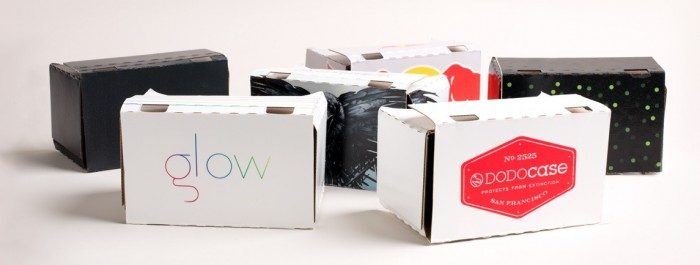Today Google is taking the wraps off of a new certification program for VR smartphone adapters. ‘Works with Google Cardboard’ will allow Cardboard VR apps to adjust specifically for a given VR smartphone adapter and help users see which adapters are certified for use with those apps.
 Google Cardboard is literally a cardboard holder which turns a smartphone into a rudimentary but very inexpensive VR headset. When the company announced the project back in 2014, it put the plans to create the device out in the open and encouraged third-party companies and DIYers to manufacture viewers based on the design.
Google Cardboard is literally a cardboard holder which turns a smartphone into a rudimentary but very inexpensive VR headset. When the company announced the project back in 2014, it put the plans to create the device out in the open and encouraged third-party companies and DIYers to manufacture viewers based on the design.
Having launched Cardboard less than a year ago, the idea has gained quite a bit of momentum with multiple third-party companies—like DODOcase and I AM Cardboard—selling variations of the device. However, with different characteristics among each headset, like the focal distance or the distance between the lenses, Cardboard apps may not offer the ideal experience because the on-screen rendering doesn’t match those characteristics.
Google’s new ‘Works with Google Cardboard’ program is designed to fix this issue. Makers of Cardboard variants (or those not event based on the design) will be able to define the essential characteristics of their VR smartphone adapter using a Cardboard profiler tool, and Google will spit out a QR code to be displayed on the device. Users will be able to use the official Cardboard app to scan the code, loading the settings and allowing apps built with the Cardboard SDK to automatically adapt to that specific headset.
See Also: Google’s ‘Cardboard’ VR App Exceeds 1 Million Downloads
As part of the Works with Google Cardboard program, headset manufacturers will be given access to branding assets that indicate to buyers that the device is compatible with Cardboard apps in this way.
Speaking with Road to VR, Andrew Nartker, Product Manager of Google Cardboard, said that all existing VR smartphone adapters are “100% compatible” with the Works with Google Cardboard program.
“A lot of the early partners are stepping up and being bigger and bigger players with the program” he said.
Google currently lists official Cardboard partners on the ‘Get Cardboard‘ page, and we expect to see the list continue to grow as companies sign up with the program.
 Interestingly, Nartker told me that one requirement for joining the Works with Google Cardboard program was that eligible smartphone adapters can’t have a headstrap. This decision was made to reduce the impact of the greater than desired latency on Cardboard devices. The idea is that users will move more slowly when holding Cardboard up to their head because they must rotate their entire torso, whereas a headstrap would allow them to rotate just their head which tends to be done with a greater rotational velocity, according to Nartker.
Interestingly, Nartker told me that one requirement for joining the Works with Google Cardboard program was that eligible smartphone adapters can’t have a headstrap. This decision was made to reduce the impact of the greater than desired latency on Cardboard devices. The idea is that users will move more slowly when holding Cardboard up to their head because they must rotate their entire torso, whereas a headstrap would allow them to rotate just their head which tends to be done with a greater rotational velocity, according to Nartker.
Fortunately, he confirmed that the Cardboard profiler tool (which will generate the QR code that allows apps to adapt to a specific headset) can be used by anyone, while presumably only those that are officially part of the program can market their product using the Works with Google Cardboard badge.








